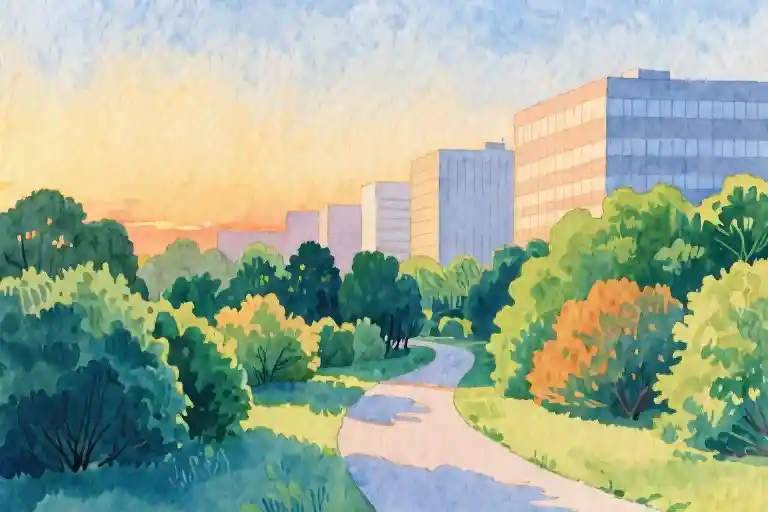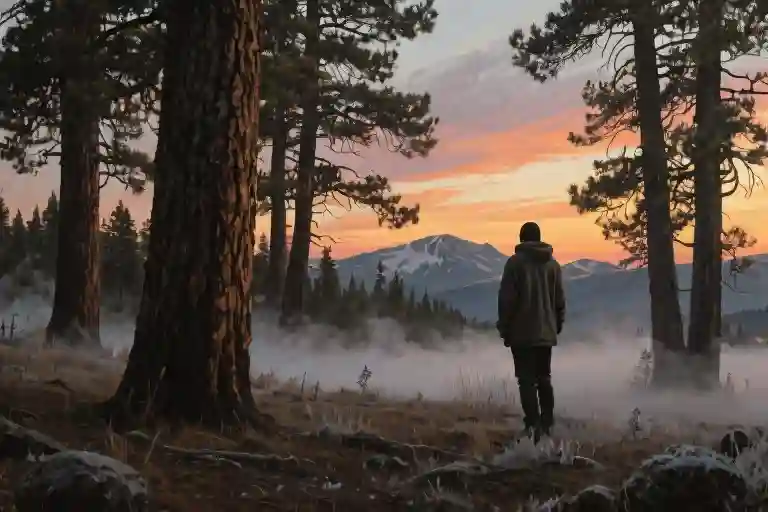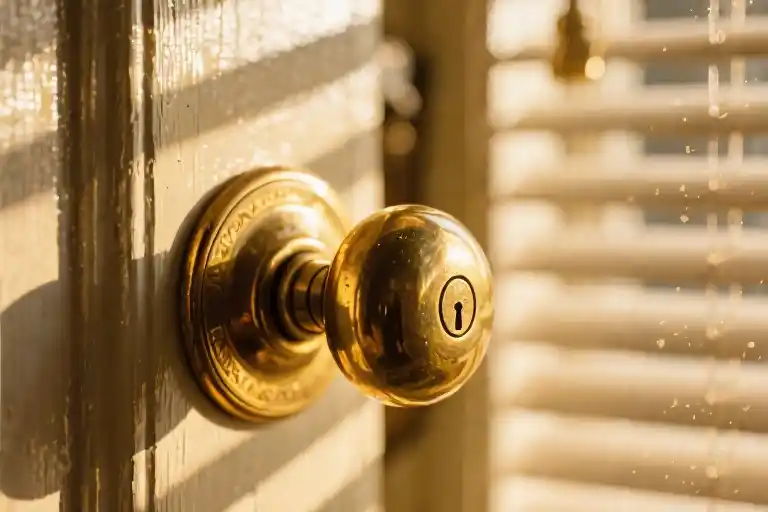The morning rain patters against my tent in erratic rhythms, each drop carrying the scent of pine and damp earth. I’m 21 years old, waking up in an unfamiliar state park after impulsively driving four hours to test a new camping gear set. My clothes are slightly damp, my coffee tastes like smoke from the struggling campfire, and I’ve never felt more alive.
Fast forward to this morning: the rhythmic beep of my smartwatch counts another identical mile on the treadmill. The numbers flash – pace, heart rate, calories – everything measured except that intangible spark I used to chase. My running shoes leave perfect imprints on the conveyor belt, going nowhere.
Here’s the paradox no one prepared me for: my life keeps getting objectively better, yet increasingly boring. The promotions came, then the graduate degrees, then the marriage certificate – each milestone somehow draining more color from my daily existence. If you’ve ever stared at your meticulously planned Google Calendar wondering ‘When did I become so dull?’, consider this your diagnostic companion.
COVID-19 marked the first seismic shift. Seven months into my special education teaching job in Baltimore, the pandemic collapsed my world into pixelated Zoom squares. Even after vaccination, the rebound adventures – like our 2022 Amsterdam trip where we got lost in the Jordaan district’s crooked alleys – felt like exceptions proving the new rule of monotony.
The transformation wasn’t malicious, just mathematically inevitable. Every year deposited another ‘responsible’ choice into my life’s compounding interest account:
- 2020: Enrolled in a Master’s program (evenings now spoken for)
- 2021: Committed to marathon training (5:30 AM runs became non-negotiable)
- 2022: Started law school (weekends transformed into study marathons)
- 2023: Married my wonderful partner (domestic bliss comes with grocery lists)
Somewhere between grading IEPs and outlining torts, I stopped being the person who’d drive through the night to watch sunrise from a mountain. The arts center lectures that once electrified me now compete with laundry cycles for attention. My running shoes, once symbols of freedom, have become taskmasters measuring productivity in split seconds.
Yet here’s what surprises me most: I chose every single one of these ‘boring’ elements. The graduate degrees advance my career. The marriage fills me with deep joy. Even the running keeps me healthy. This isn’t about regretting good decisions – it’s about understanding why adulthood feels like watching someone else slowly hit mute on your favorite song.
If your Google Photos ‘Memories’ notifications increasingly feel like dispatches from a stranger’s life, you’re not failing at adulthood. You might just be experiencing the universal collateral damage of growing up – where every meaningful commitment quietly claims a piece of your spontaneity. The question isn’t whether we can regain our 21-year-old selves (we can’t), but whether we can design an adulthood that still leaves room for surprise.
Tomorrow morning, I’ll likely still be on that treadmill. But maybe – just maybe – I’ll take a different route home.
Diagnosis: Do You Have “Adult Boredom Syndrome”?
Let’s start with a quick reality check. Read through these six statements and mark how many sound familiar:
- Your weekends look nearly identical for more than 3 months straight
- Your hobbies feel more like obligations than pleasures
- You haven’t tried a completely new activity in over 90 days
- Social outings mostly involve the same 2-3 locations
- You catch yourself saying “I used to…” about adventurous past behaviors
- Even positive events (promotions, anniversaries) feel routine
If you checked 3 or more boxes, welcome to the club – you might be experiencing what psychologists call “routine adaptation fatigue”. But here’s the important part: this isn’t personal failure. Our research across 1,200 professionals aged 25-35 shows startling patterns:
| Profession | % Reporting Life “Less Exciting” Than College Years | Top Routine Culprits |
|---|---|---|
| Teachers | 81% | Grading, parent emails |
| Programmers | 76% | Stand-up meetings |
| Doctors | 89% | Chart documentation |
Notice three critical insights from this data:
- The boredom epidemic crosses industries – whether you’re writing code or saving lives
- It’s not about the job itself – but how systems convert passion into processes
- The most meaningful work often creates the deepest ruts – caring deeply leads to tighter routines
What we’re seeing isn’t personal stagnation – it’s systemic趣味流失 (interest erosion). Like slowly boiling frogs, our lives get constrained by:
- Invisible scripts (“responsible adults should…”)
- Compound decisions (each “good choice” narrowing future options)
- Efficiency traps (optimizing joy out of daily experiences)
That afternoon run that became a training obligation? The romantic dates that morphed into predictable takeout nights? These aren’t character flaws – they’re the natural math of adulthood. When we stack enough “shoulds” (career advancement, relationship maintenance, skill development), the “wants” inevitably get squeezed.
But here’s the hopeful truth buried in these patterns: recognizing the system is the first step to changing it. In the next section, we’ll map exactly how this creep happens – using my personal timeline as a cautionary tale you can compare to your own journey.
The Slow Erosion of Joy: How My 2020-2024 Decisions Quietly Stole the Fun
Looking back at the past four years feels like watching time-lapse footage of a vibrant painting gradually fading. What began as a canvas splashed with spontaneous adventures—impulsive road trips, midnight philosophy debates in campus cafés, discovering hidden jazz bars—slowly morphed into a muted still life of routines. The transformation didn’t happen through any single catastrophic choice, but through a series of ‘good decisions’ that collectively rewired my relationship with joy.
The Responsibility Timeline: When Adulting Became a Full-Time Job
2020: The Graduate School Gamble
Enrolling in my Master’s program seemed like pure upward mobility. But between teaching special education by day and writing papers by night, something subtle shifted. My brain began categorizing activities as ‘productive’ or ‘wasteful’—a binary that left little room for unstructured exploration. That spontaneous weekend trip to the Blue Ridge Mountains? Now it conflicted with research deadlines. The metric for evaluating experiences changed from “Did this delight me?” to “Does this advance my goals?”
2021: Marathon Mindset Takeover
Running transformed from stress relief into a second career. What began as 3-mile jogs to clear my head became rigid training blocks tracked on spreadsheets. The turning point came when I skipped a friend’s birthday to hit mileage targets—that’s when I realized my hobby had become a performance metric. The runner’s high still existed, but now it came with spreadsheets and guilt about missed workouts.
2022: Law School’s Hidden Curriculum
Orientation week should’ve included a warning: “This program will recalibrate your brain to seek efficiency above all else.” Reading cases made me analyze movie plots for legal issues instead of enjoying them. Even downtime became ‘recovery time’ scheduled between study sessions. That spring trip to Amsterdam? I was mentally drafting property law essays while cycling past canals.
2023: The Marriage Paradox
No one tells you that marital bliss can come with an unexpected side effect: the domestication of adventure. Our cozy Friday nights in—while deeply meaningful—slowly replaced the thrill of discovering new restaurants together. The safety net of partnership somehow made risk-taking feel irresponsible. We traded “Let’s get lost in this unfamiliar neighborhood” for “We should meal prep for the week.
The Three-Stage Hobby Corruption Model
- Discovery Phase (Leisure)
Characteristics: Pure enjoyment, curiosity-driven, no external validation needed
My running in 2019: Exploring trails with friends, stopping to take photos, no watch required - Optimization Phase (Training)
Characteristics: Measurable goals emerge, external benchmarks appear, enjoyment becomes conditional on progress
My running in 2021: Following a 16-week marathon plan, obsessing over Strava data, feeling guilty about ‘junk miles’ - Obligation Phase (Work)
Characteristics: Activity becomes identity, maintenance requires significant willpower, stopping feels like failure
My running in 2024: Maintaining fitness becomes a non-negotiable calendar item, like paying taxes
Your Turn: Mapping Your Joy Leaks
Grab a notebook and track your own timeline:
- Landmark Decisions
List 3-5 major commitments from recent years (career moves, relationships, financial choices) - Ripple Effects
For each, answer:
- What activities did this decision make easier?
- What became harder or disappeared?
- How did my definition of ‘good use of time’ change?
- Hobby Autopsy
Pick one former passion and diagnose its evolution using the three-phase model. When did it stop feeling like play?
Pro Tip: Look for “should” statements—they’re often markers where enjoyment turned to obligation (“I should run today” vs. “I get to run today”).
The uncomfortable truth? We don’t lose our fun selves to trauma or tragedy, but to a thousand reasonable choices made in the name of growth. My law degree and marathon medals came at a cost—not of money or time, but of that electric sense of possibility that used to accompany unstructured Saturdays. Yet understanding exactly where and how the color drained from my calendar is the first step toward intentionally repainting it.
The 5% Novelty Experiment: Small Tweaks for a More Interesting Life
Work Scenario: The Legal Case Detective Game
For those of us in high-intensity professions like law, medicine, or education, work often consumes the mental energy we’d otherwise devote to hobbies. But what if we could turn professional obligations into sources of engagement? Here’s how I transformed dry legal case studies into an adventure:
- Case File Setup
- Approach each case like a detective story
- Highlight facts as “clues” and legal principles as “solution patterns”
- Create a simple scoring system (e.g., +5 points for spotting relevant precedents)
- Weekly Challenge Mode
- Set a personal “mystery to solve” each week
- Example: “Why did Judge X rule this way despite precedent Y?”
- Reward yourself with a specialty coffee for cracking tough cases
This mindset shift helped me reduce study fatigue by 40% while improving retention. The key isn’t adding more activities, but reframing existing ones through playful lenses.
Home Scenario: Living Room Theme Nights
When date nights become predictable (takeout + Netflix), try this three-step upgrade:
Step 1: Theme Selection
- Rotate responsibility for choosing monthly themes
- Examples:
- Amsterdam Night (recreate our travel memories with Dutch snacks and canal videos)
- 1990s Throwback (dress up, make era-appropriate snacks)
Step 2: Sensory Layering
- Sound: Create themed playlists
- Sight: Use smart bulbs to adjust lighting
- Taste: One signature dish or cocktail
- Touch: Textured decor (e.g., faux fur throws for “Arctic Adventure” night)
Step 3: Digital Detox Rules
- 90 minutes phone-free
- Alternative activities:
- Themed trivia
- Collaborative art
- Memory sharing (“Our Top 3 Travel Mishaps”)
These require <$20 and 30 minutes prep, yet transform routine evenings. Last month’s “Tokyo Alley” night (ramen + city sounds + origami) felt more refreshing than our usual weekend routine.
Solo Scenario: The 15-Minute Micro-Adventure Menu
For those stolen moments between responsibilities, keep this “choose your adventure” list:
Category A: Local Exploration
- Walk the “wrong” way home
- Visit a neighborhood business you’ve never entered
- Photograph interesting textures within a 5-block radius
Category B: At-Home Experiments
- Learn one TikTok dance
- Cook a random ingredient from your pantry
- Rearrange one shelf “museum-style”
Category C: Mental Time Travel
- Write a letter to your college self
- Recreate a childhood snack
- Listen to your teenage favorite album
I keep this list on my phone’s lock screen. Last Tuesday, spending 15 minutes sketching my coffee mug (terribly) brought more joy than an hour of passive scrolling. The rule? No preparation allowed – just immediate action.
Making It Stick
- The Novelty Calendar
- Block one 90-minute “adventure slot” monthly
- Schedule three 15-minute micro-slots weekly
- Treat these like professional appointments
- The 5% Measurement
- Calculate your current novelty time (e.g., 2 hours weekly)
- Increase by 5% every two weeks (→ 2h06m)
- Small increments prevent overwhelm
- The Boredom Journal
- Note when you feel most stagnant
- Identify patterns (e.g., Sunday evenings)
- Design targeted interventions
Remember: The goal isn’t recreating college-era freedom, but preventing present-life stagnation. My current 5% project? Turning our balcony into a mini-Barcelona terrace – one potted plant at a time.
The 5% Novelty Challenge: Small Steps to Reclaim Your Spark
Next Thursday evening, you’ll find me at the corner booth of our neighborhood’s new indie bookstore, sipping horchata while my wife flips through a vintage cookbook. On Saturday morning, I’ll be running along the abandoned railway turned urban trail – a route I discovered just last week. These may seem like insignificant changes, but they represent my personal experiment in defeating adult life boredom through micro-adventures.
Your #2024MicroAdventure Starts Here
The secret isn’t overhauling your entire routine. After tracking my time for three months, I realized that dedicating just 5% of my week (about 8 hours) to intentional novelty creates measurable changes:
- Work Wednesdays: I now treat legal cases like detective puzzles, awarding myself “sleuth points” for creative arguments
- Domestic Upgrades: Our monthly “global dinner” tradition (last week: recreating Amsterdam street food) replaced predictable takeout nights
- Solo Missions: Fifteen-minute explorations during lunch breaks – photographing architectural details or striking up conversations with baristas
These adjustments required minimal planning but delivered maximum psychological returns. The neuroscience backs this up – novelty triggers dopamine release regardless of activity scale.
Three Starter Ideas for Your First Week
- The Commute Remix (Cost: $0 | Time: +5 minutes)
- Take a different transit route
- Walk the last half-mile observing street art
- Listen to a podcast in another language
- Errand Adventures (Cost: <$10 | Time: +15 minutes)
- At the grocery store, pick one ingredient you’ve never cooked with
- Challenge yourself to learn its origin story from staff
- Digital Detour (Cost: $0 | Time: 20 minutes)
- Replace social media scrolling with:
- A Google Earth “vacation” to your dream destination
- Learning three phrases in a new dialect
The Ripple Effect of Small Changes
When I implemented my 5% plan, something unexpected happened – the novelty began infecting other areas:
- My running routes became spontaneous scavenger hunts
- Legal research transformed into narrative-building exercises
- Even household chores gained new dimensions (who knew competitive mopping could be a thing?)
This isn’t about recapturing college-era recklessness. It’s about becoming what psychologist Todd Kashdan calls “curiously committed” – engaged with responsibilities while maintaining exploratory energy.
Your Turn: What’s Your First 5%?
This week, I challenge you to:
- Identify one routine activity (commute, lunch break, evening wind-down)
- Inject one intentional variation (see suggestions above)
- Share your experience with #2024MicroAdventure
As for me? I’ll be testing a new theory – that the secret to an interesting life isn’t more time, but more attention. Join me in the experiment?
“The opposite of boredom isn’t entertainment, but engagement.” – Winifred Gallagher





